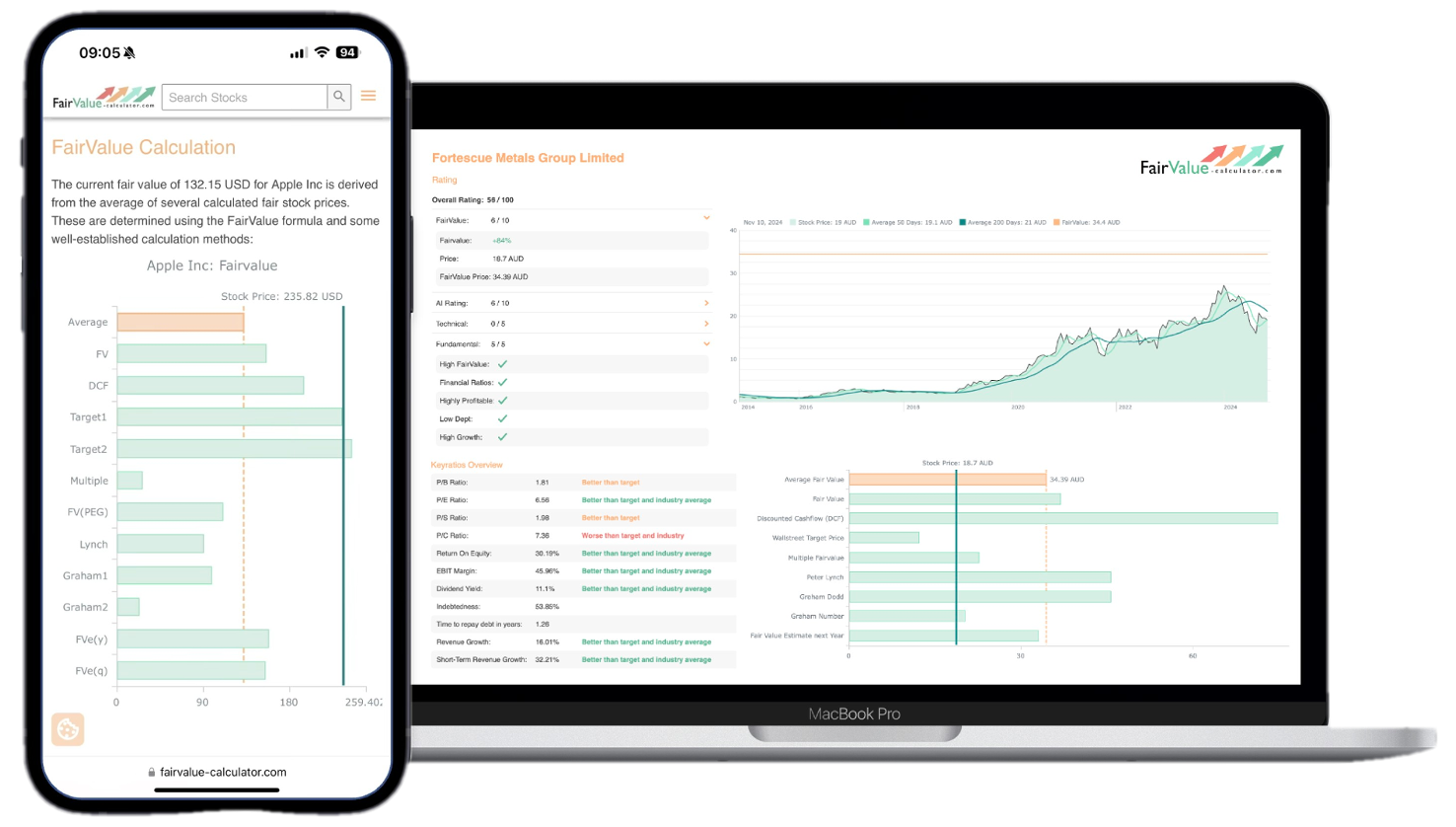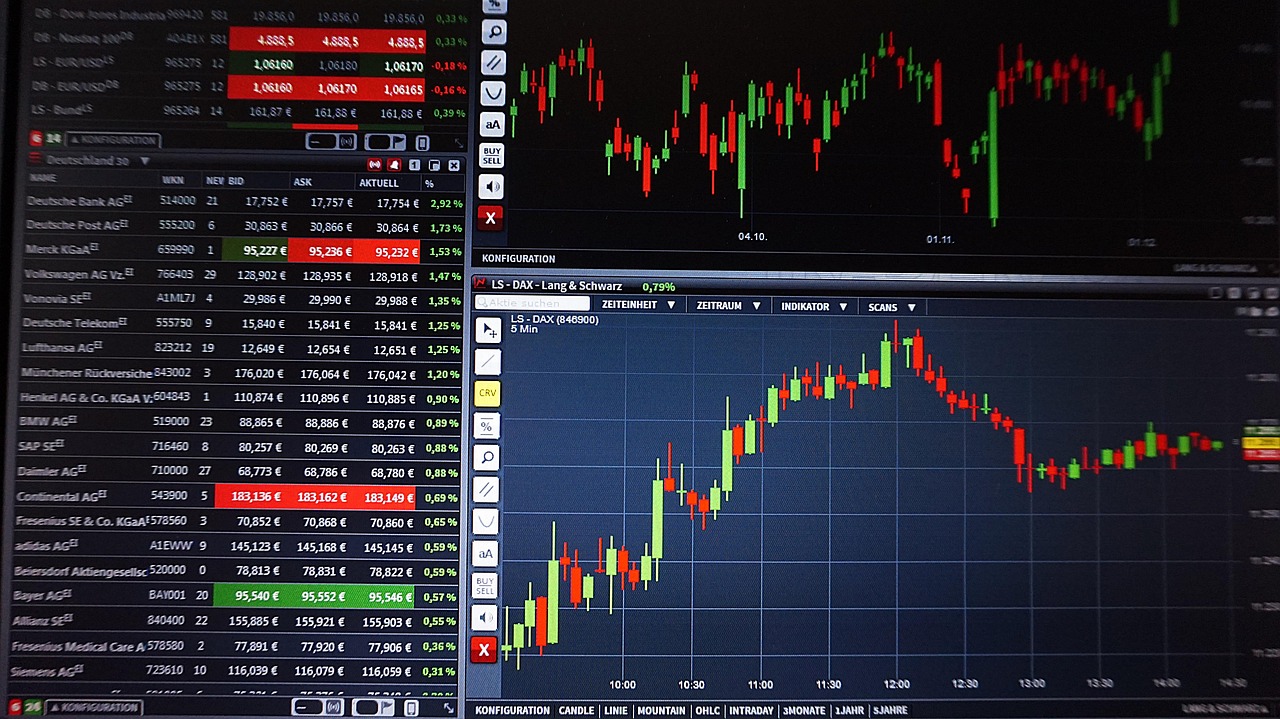In the world of investing, few debates spark as much passion and intrigue as the battle between value and growth stocks. It’s a struggle that has captivated the minds of investors for decades, with both sides claiming superiority at different times. But what if we told you that beneath this ongoing debate lies a trove of untold secrets waiting to be unveiled? As an investor, understanding the long-term performance of value stocks compared to growth stocks could be your key to unlocking substantial returns and gaining an edge in the market.
The academic research on this topic is compelling. Studies like Fama & French (1992, 1998) reveal a striking global value premium of about +7.6% per year, while contrarian value strategies have shown up to a +10% annual outperformance according to Lakonishok, Shleifer & Vishny (1994). These numbers aren’t just artifacts of the past; Asness, Moskowitz & Pedersen (2013) found consistent value premiums across asset classes, and more recent findings by Hasler in 2023 continue to support these claims with 3–5% annual outperformance. Yet, the real magic happens when proprietary data from fairvalue-calculator.com is considered, highlighting that a portfolio of undervalued stocks from 2005–2025 delivered a staggering +846% return compared to the market’s +162%. Understanding these secrets and the evidence behind them could transform your investment strategy—it’s time to unveil the truth about value vs. growth stocks.
💡 Discover Powerful Investing Tools
Stop guessing – start investing with confidence. Our Fair Value Stock Calculators help you uncover hidden value in stocks using time-tested methods like Discounted Cash Flow (DCF), Benjamin Graham’s valuation principles, Peter Lynch’s PEG ratio, and our own AI-powered Super Fair Value formula. Designed for clarity, speed, and precision, these tools turn complex valuation models into simple, actionable insights – even for beginners.
Learn More About the Tools →What distinguishes value investing from growth investing and which is better for long term returns?
Value vs. Growth Stocks represent two distinct philosophies. Value investing focuses on buying stocks trading below their intrinsic worth—often measured by low price-to-book or low price-to-earnings ratios. Growth investing, on the other hand, targets companies with above-average projected earnings growth, even if their valuations appear rich. The core distinction lies in mindset: value investors seek bargains and potential mean reversion, while growth investors chase momentum and rapid revenue expansion.
For long-term returns, numerous studies favor value investing. Fama & French (1992, 1998) documented a global value premium of about +7.6% annually, while Lakonishok, Shleifer & Vishny (1994) found contrarian value strategies outperforming by +10% per year. Asness, Moskowitz & Pedersen (2013) reinforced these findings across asset classes, citing a consistent +6% value premium. Meanwhile, fairvalue-calculator.com’s proprietary portfolio data (2005–2025) shows undervalued stocks returned +846%, versus +162% for the market. Although growth stocks can outshine value during bull markets, the long-run edge belongs to value, driven by investor biases, risk mispricing, and eventual mean reversion.
🚀 Test the Fair Value Calculator Now!
Find out in seconds whether your stock is truly undervalued or overpriced – based on fundamentals and future growth.
Try it for Free →What are the differences between value investing and growth investing and which is more profitable?
Value investing and growth investing differ primarily in valuation metrics and risk perceptions. Value investors hunt for companies with low valuation multiples—like price-to-earnings (P/E), price-to-book (P/B), or price-to-cash flow—that trade below their “fair value.” Growth investors prioritize revenue growth rates, market share expansion, and innovation potential, accepting premium valuations to own tomorrow’s winners today.
Profitability over decades has tended to favor value stocks. Key academic evidence includes:
- Fama & French (1992, 1998): +7.6% global value premium annually.
- Lakonishok, Shleifer & Vishny (1994): +10% contrarian outperformance.
- Asness, Moskowitz & Pedersen (2013): +6% cross-asset value premium.
- Chen (2008): ~6.1% HML premium per year.
- Hasler (2023): 3–5% conservative annual outperformance.
Although growth stocks sometimes generate spectacular returns during technology-driven bull runs, value stocks have historically delivered steadier, more repeatable gains, outperforming on a risk-adjusted basis. Over very long horizons, the disciplined, evidence-based approach of value investing tends to produce higher risk-adjusted profits than chasing growth narratives.
Explore our most popular stock fair value calculators to find opportunities where the market price is lower than the true value.
- Peter Lynch Fair Value – Combines growth with valuation using the PEG ratio. A favorite among growth investors.
- Buffett Intrinsic Value Calculator – Based on Warren Buffett’s long-term DCF approach to determine business value.
- Buffett Fair Value Model – Simplified version of his logic with margin of safety baked in.
- Graham & Dodd Fair Value – Uses conservative earnings-based valuation from classic value investing theory.
- Intrinsic vs. Extrinsic Value – Learn the core difference between what a company’s really worth and what others pay.
- Intrinsic Value Calculator – A general tool to estimate the true value of a stock, based on earnings potential.
- Fama-French Model – For advanced users: Quantifies expected return using size, value and market risk.
- Discount Rate Calculator – Helps estimate the proper rate to use in any DCF-based valuation model.
How can I identify undervalued stocks that have the potential for growth?
Identifying undervalued stocks with growth potential involves blending quantitative screening with qualitative analysis. Start with valuation metrics—low P/E, low P/B, or a high dividend yield relative to peers. Then overlay growth indicators such as historical and projected earnings-per-share increases, revenue growth rates, and expanding profit margins. Finally, assess industry dynamics, competitive advantages, and management quality.
Proprietary research from fairvalue-calculator.com suggests a median time-to-convergence to fair value of about five years. To replicate this, follow these steps:
- Screen for deep discounts using HML (high minus low) portfolios.
- Confirm momentum signals—Asness et al. (2013) show momentum complements value.
- Analyze cash flow forecasts and balance-sheet strength.
- Review catalysts: strategic initiatives, spin-offs, or M&A activity.
By integrating these factors, you filter for “cheap” stocks that also exhibit reliable growth trajectories, maximizing the odds of capturing both value premiums and compounding returns over time.
Are value stocks underperforming growth stocks in the current market?
Market cycles periodically favor one style over the other. Recent years (2020–2021) saw growth stocks—especially tech leaders—skyrocket on low interest rates and digital adoption trends, leading many to ask if value stocks are permanently out of favor. In the short term, growth outperformance can dwarf value returns, but history shows these rotations eventually swing back.
Evidence from fairvalue-calculator.com reminds us that value’s median convergence time is five years. Short-term underperformance often stems from investor biases: over-extrapolating past growth and neglecting risk mispricing. Long-term, once growth expectations normalize and fundamentals matter again, value stocks typically deliver robust catch-up gains, reaffirming that temporary underperformance is part of the value vs. growth stocks performance cycle.
What is the difference between a value investor and a growth investor?
A value investor prioritizes margin of safety and buys securities priced below intrinsic value, often relying on fundamental metrics like P/E, P/B, or discounted cash flow models. Value investors embrace contrarian thinking, betting that market overreactions create bargains when fundamentals are solid but sentiment is poor.
By contrast, a growth investor targets companies with high expected earnings or revenue growth, even if valuations appear extended. Growth investing often involves forward-looking projections, optimistic scenarios around technological innovation, and a willingness to pay premium multiples for potential market disruptors. While growth investors endure valuation risk if targets aren’t met, value investors face shorter-term sentiment risk until mean reversion occurs.
What is the most important factor when choosing a growth stock to buy?
Identifying the single most critical factor in growth stock selection can be challenging, but consistent revenue and earnings acceleration stand out. A company must demonstrate a sustainable, above-market growth runway—driven by unique products, network effects, or scalable business models.
Additional considerations include:
- Profit margin trends: narrowing or expanding margins.
- Cash flow generation: free cash flow vs. reinvestment needs.
- Competitive advantage: patent protection, branding, or ecosystem lock-in.
- Valuation discipline: reasonable P/E relative to forward growth (PEG ratio).
Ultimately, the synergy between high growth rates and improving profitability reduces execution risk and valuation peril, enhancing the odds of capturing outsized returns.
How do I identify undervalued stocks with long term growth potential?
Combining value and growth principles—often called “GARP” (Growth at a Reasonable Price)—can yield compelling candidates. Use screens that filter for moderate P/E or P/B ratios while also requiring historical revenue growth above a set threshold. Then apply a discounted cash flow analysis to estimate fair value.
Qualitative due diligence should cover industry trends, management track records, and potential catalysts like new product launches or market expansions. Fairvalue-calculator.com data shows that a patient, multi-year horizon (3–7 years) is often required for undervalued growth stocks to converge to true worth, underscoring the need for both rigorous analysis and perseverance.
What are growth stocks? Are they risky?
Growth stocks are shares of companies anticipated to grow revenues, earnings, or cash flow faster than the broader market. They often trade at premium valuations—high P/E or price-to-sales multiples—reflecting optimistic future prospects. Sectors like technology, biotech, and renewable energy commonly host growth leaders.
However, this upside potential comes with elevated risk. Disappointments in execution, regulatory headwinds, or broader market sell-offs can lead to sharp drawdowns. Asness, Moskowitz & Pedersen (2013) note that momentum strategies (often aligned with growth) go through volatile drawdown periods. Hence, growth investors must manage valuation risk, maintain stop-loss disciplines, and diversify across multiple high-growth themes to mitigate downside.
Is it true that growth and value stock are negatively correlated?
Growth and value styles often exhibit low or even negative correlation during market rotations. In bullish, low-rate environments, growth stocks tend to outperform as investors chase future earnings. Conversely, in rising-rate or economic-stall scenarios, value stocks often hold up better due to their stable cash flows and lower leverage.
However, over full economic cycles, the styles can converge or even correlate positively when fundamentals align broadly. The key takeaway for asset allocators: combining both strategies can improve diversification and risk-adjusted returns, thanks to their cyclical tendencies and occasional negative correlation.
Should I invest in growth or value stocks in 2025?
Predicting style leadership is inherently uncertain, but evidence-based principles can guide allocations. With rising interest rates and potential economic headwinds, value stocks—trading on hard assets and stable cash flows—may offer a margin of safety. Meanwhile, the development of AI, renewable energy, and biotech continues to present growth opportunities.
A balanced approach—tilting toward value in defensive sectors while reserving a portion for high-quality growth—can capture value vs. growth stocks performance benefits over time. Regular rebalancing, guided by research from Fama & French, Asness et al., and fairvalue-calculator.com, helps maintain desired risk exposures and capitalize on style rotations as 2025 unfolds.
The Fundamentals of Value Stocks
Value stocks are characterized by low valuation multiples relative to history and peers—metrics like price-to-earnings, price-to-book, and dividend yield. These companies often operate in mature industries with predictable cash flows, stable earnings, and competitive moats that have fallen out of favor. Investor biases—such as overreacting to short-term news—can depress valuations, creating a margin of safety for disciplined buyers.
Academic research consistently highlights value’s edge: Fama & French’s HML (high minus low) portfolio generated ~6–7% annual premiums globally, while Hasler (2023) confirms 3–5% outperformance even under conservative assumptions. By focusing on fundamentals, patient investors tap into mean reversion and risk mispricing, laying the groundwork for robust long-term returns.
The Characteristics of Growth Stocks
Growth stocks display rapid revenue and earnings expansion, often fueled by innovation, network effects, or market share gains. Investors pay premium valuations for expected future cash flows, reflected in high P/E or price-to-sales multiples. Growth companies frequently reinvest heavily, sacrificing near-term profitability for market leadership and scalability.
However, lofty expectations amplify valuation risk: missed forecasts or disrupted supply chains can trigger sharp sell-offs. As Asness, Moskowitz & Pedersen (2013) document, momentum can fuel growth rallies, but patient, data-driven investors must remain vigilant around catalysts, competitive threats, and execution hurdles to balance upside potential against downside risk.
Historical Performance of Value Stocks
Value vs. Growth Stocks performance over the past century underscores value’s long-run advantage. From 1927–1991, Fama & French documented a +7.6% annual global value premium. Lakonishok, Shleifer & Vishny (1994) found contrarian strategies outperforming by +10% annually in U.S. markets. Later, Asness et al. (2013) extended these findings across equity, bond, currency, and commodity markets, reporting an average +6% premium.
More recent work by Chen (2008) and Hasler (2023) confirms value’s durability. Proprietary data from fairvalue-calculator.com shows a portfolio of undervalued stocks from 2005–2025 posted +846%, dwarfing the market’s +162%. This cumulative edge demonstrates that buying discounted assets and waiting for mean reversion remains a powerful wealth-building strategy over decades.
Historical Performance of Growth Stocks
Growth stocks enjoyed dramatic stretches of outperformance, notably during the dot-com boom (1995–2000) and post-2008 technology surge. Companies like Amazon, Netflix, and Tesla delivered multi-hundred percent gains, lifting growth indices well above the market. Momentum-driven rallies, low interest rates, and disruptive innovation fueled these rallies.
However, growth outperformance often ended in steep drawdowns. The dot-com bubble burst erased trillions in market cap, and recent 2022 sell-off wiped out a chunk of tech valuations amid rising rates. Over full cycles, growth’s higher volatility and valuation risk have translated into lower risk-adjusted returns compared to value, underscoring why an evidence-based blend of styles can deliver more consistent outcomes.
Factors Influencing Value Stocks Performance
Several forces drive value stocks’ performance. Investor biases—overreacting to bad news and shunning unloved sectors—create mispricings. Mean reversion eventually corrects these errors, rewarding patient investors. Risk mispricing also plays a role: precarious industries often trade at steep discounts despite stable cash flows, offering compensation for perceived—but not always realized—risks.
Macro factors matter too. Rising interest rates can benefit financials, energy, and industrials—common value sectors. Inflation hedges and dividend yields further bolster returns. Finally, corporate actions like spin-offs, share buybacks, or management changes often unlock value, providing catalysts for price convergence to fair value over a 3–7-year median horizon, as fairvalue-calculator.com data shows.
Factors Influencing Growth Stocks Performance
Growth stocks hinge on broad economic and technological trends. Falling interest rates amplify the present value of far-off cash flows, boosting high-P/E names. Technological breakthroughs—cloud computing, artificial intelligence, biotechnology—create winners with exponential growth paths. Investor sentiment and momentum also fuel rallies, as documented by Asness, Moskowitz & Pedersen (2013).
Conversely, rate hikes and tightening credit can severely erode valuations, as future profits become less valuable. Execution risks—regulatory setbacks, supply-chain disruptions, or intensifying competition—pose additional threats. To navigate these factors, growth investors must carefully monitor macro shifts and company-specific catalysts, balancing optimism with valuation discipline.
Risk Analysis: Value vs. Growth Stocks
Value and growth stocks carry distinct risk profiles. Value faces idiosyncratic risk: individual companies may languish in out-of-favor industries or struggle with structural challenges. Yet, broad diversification across value factors (low P/E, low P/B, high dividend yield) mitigates this. Historical drawdowns tend to be shallow relative to growth, and mean reversion provides a cushion over time.
Growth risk centers on valuation and event risk. Overpaying for high expectations can lead to severe corrections if forecasts slip. Momentum-driven bubbles amplify downside when sentiment reverses. On the flip side, successful growth picks can deliver outsized returns. For many investors, blending both styles reduces portfolio volatility and enhances long-term return potential by capturing the value vs growth stocks performance premium regardless of market regime.
Strategies for Investing in Value Stocks
Effective value strategies begin with robust screening for low valuation multiples—but don’t stop there. Incorporate quality filters: stable earnings, healthy cash flows, and low leverage. Overlay momentum indicators to avoid “value traps” that never rebound. Consider catalysts such as management buybacks or industry consolidation to accelerate convergence.
A multi-factor approach—combining Fama & French’s HML, profitability factors (RMW), and momentum—has proven superior in academic studies and in fairvalue-calculator.com backtests. Maintain a long horizon (3–7 years) to allow mean reversion, and rebalance periodically to capture style rotations. This disciplined process unlocks the consistent 6–8% annual premiums documented by decades of research.
Strategies for Investing in Growth Stocks
Growth investing demands focus on revenue momentum, innovation catalysts, and valuation discipline. Use screens for high sales and earnings growth, then refine with margin and cash flow metrics. Employ a tiered position-sizing framework: allocate more to proven leaders with scale and competitive advantages, less to speculative early-stage names.
Diversification across sectors—tech, healthcare, consumer discretionary—helps mitigate idiosyncratic shocks. Keep an eye on interest-rate environments, as rising yields can pressure high-P/E stocks. Finally, set clear sell rules when valuation targets are breached or when growth indicators decelerate. This balanced approach curbs downside without stifling the explosive upside that growth champions can deliver.
Conclusion: Unveiling the Best Investment Approach
The ongoing debate of value vs. growth stocks performance need not be a zero-sum game. Academic evidence—from Fama & French to Asness et al.—and real-world data from fairvalue-calculator.com consistently point to a durable value premium of 3–10% per year, offset by growth’s volatility and momentum drawdowns. By combining both styles, investors capture diversification benefits, smoother returns, and a stronger risk-adjusted profile.
Ultimately, patience, evidence, and disciplined execution matter more than chasing the latest market hype. Check the fair price of any stock in seconds with the Fairvalue Calculator → fairvalue-calculator.com.







